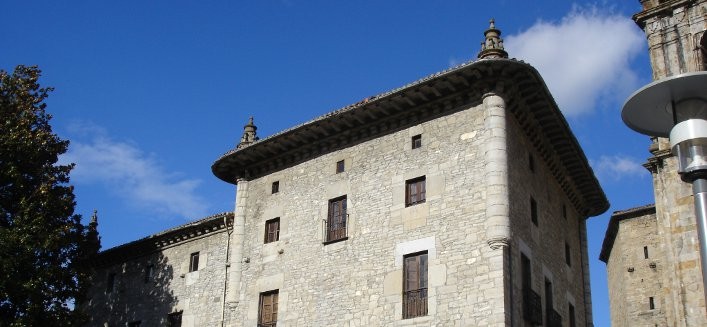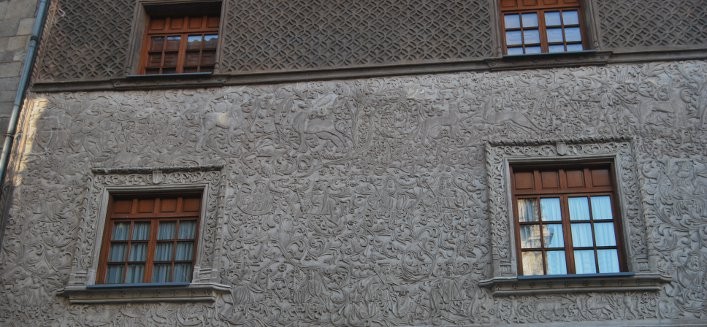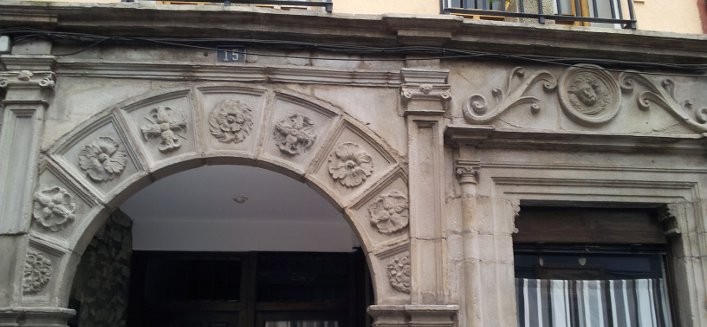Bergara is a truly monumental town and the historic centre has a large number of mansions and tower houses. The 16th century was a time of peace and prosperity for Bergara and this economic boom favoured the construction of many buildings that reflect the artistic style of the time and are well worth admiring.
The tower houses of Gabiria, Ozaeta, Ondartza and Olaso, which no longer have their original defensive function, still retain the external features typical of military architecture, such as the turrets with pointed roofs.
On the other hand, the Renaissance style is introduced in the mansions of Arrese and Azkarate-Marutegi, both embellished with corner balconies. The Azkarate-Marutegi mansion also stands out because the façade facing Calle San Pedro is decorated with 53 superb ceramic plaques manufactured in a German kiln.
Close to the Town Hall is Jauregi House. The bas-relief of the front of the building covers the entire wall and dates to the year 1500. The initial “horror vacui” conceals unusual scenes depicting the royal court, hunting and monarchs holding sceptres.
The Aroztegi Mansion, situated in Calle Barrenkale, displays rich Plateresque features in the carvings that once decorated the main gateway and are currently kept inside the building. Finally, Egino Mallea Mansion, built around 1585, shows different superimposed architectural elements, examples of the Mannerist style typical of the period
There are several locations in this region associated with the life of San Francisco de Borja: Oñati, where he lived for a number of years and Bergara, where he celebrated his first public mass in 1551. This event took place in the single-nave 16th century shrine of Santa Ana de Bergara, located in the park adjacent to Errotalde Mansion.
The church of San Pedro de Ariznoa is also significant. The very first references to the church go as far back as 1344, however, the existing building dates to the 16th century. The highlight is the Plateresque altarpiece above the main altar. Between 1551 and 1552, San Francisco de Borja preached and celebrated mass many times in the church, and this is recognised by an inscription.





